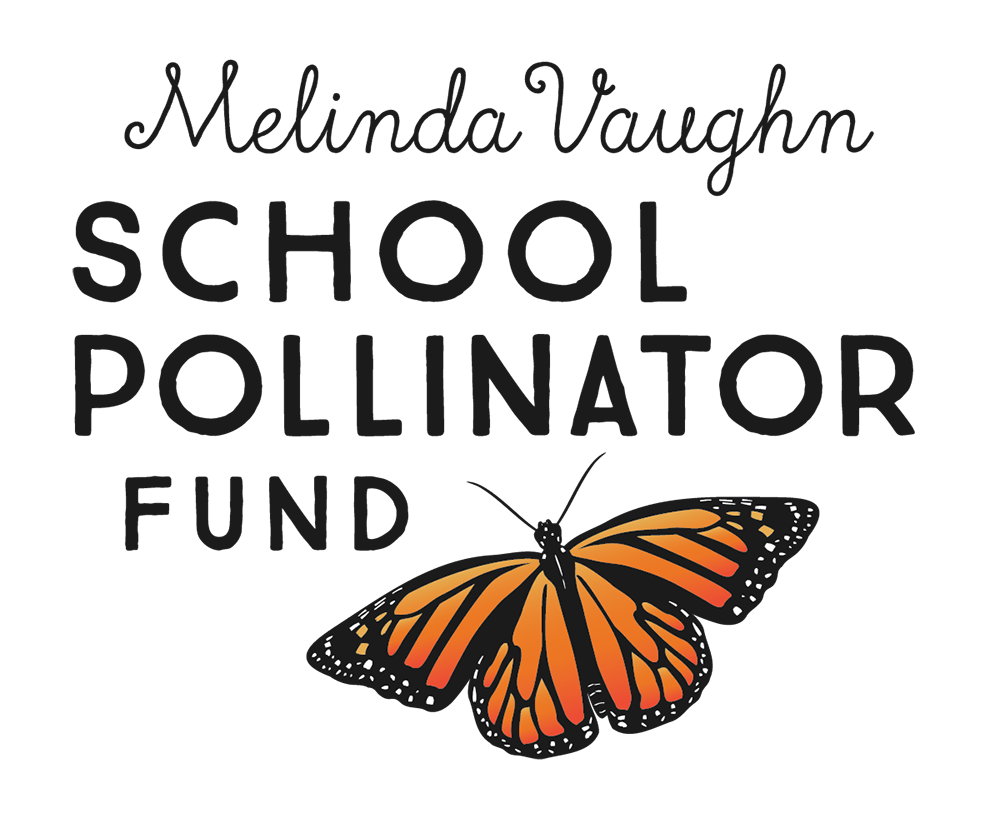
COMMUNITY RESOURCES
Gardening for Pollinators
Photo © Dawn Parendo
Planning Your Project
There are a lot of resources to help you along the way. A good place to start is this habitat assessment guide from the Xerces Society for Invertebrate Conservation. In it, you’ll find a checklist of actions to promote pollinators, along with a list of recommended plants.
Choosing native plants for your yard or garden supports pollinators as well as the environment. Native plants help manage stormwater, are more tolerant of drought conditions, typically require less water and fertilizer, and are more resistant to pests than non-native plants.
Gardens of All Sizes
One of the best ways to help pollinators is by planting habitat and protecting it from pesticides. You can provide food and shelter for bees, butterflies, moths, hummingbirds, and more. And your garden doesn’t have to be big to be helpful.
Add Variety
You can attract a diverse mix of pollinators with native flowering plants in a range of colors and shapes. Because pollinators are active in the early spring and into the fall, it’s important to provide blooms from April to October. Find out which plants draw specific pollinators and learn about creating habitat specifically for monarch butterflies or the endangered rusty patched bumble bee — Minnesota’s state bee.
Avoid Pesticides
In addition to keeping pesticides out of your own yard, purchasing plants that haven’t been treated with insecticides is another way to protect pollinators. The Xerces Society for Invertebrate Conservation provides helpful information to guide your buying decisions.
Make a Plan
Blue Thumb–Planting for Clean Water offers a Plant Finder with bloom months, light exposure, and other considerations. Neighborhood Greening provides a list of nurseries and other regional native plant resources. When you’re ready to plant, the Minnesota Board of Soil and Water Resources’ Planting for Pollinators guide can help you implement and maintain your project.
Container Gardening
If you have limited outdoor space or want to start small, another option is to grow a container pollinator garden. Black-eyed susan, purple coneflower, and anise hyssop are a few of the pollinator-friendly container plants. A few key considerations:
Determine your sun exposure
Many native plants send out deep roots, so find a deep pot
Choose a soil that will drain quickly
Offer Water, Shelter, and Nesting sites
In addition to food (pollen and nectar), pollinators also need water and shelter. Shallow containers with sloping sides can be used to provide a water source. To provide resting sites and reduce the risk of drowning, add rocks or gravel that rise above the water surface.
You can accommodate pollinators’ different nesting needs by leaving areas of bare soil for ground-nesting bees, placing hollow plant stems and brush piles in the landscape for cavity-nesting pollinators, and providing milkweed that will provide shelter (and food) for monarch butterfly caterpillars when they emerge. When the growing season is over, leaves and stems also provide important overwintering habitat.
Planting diverse native plants under trees and including leaf litter and plant debris – known as “soft landings” – will provide critical shelter and habitat for one or more life cycle stages of moths, butterflies, and bumble bees.
Common Pollinator Plants
Minnesota Native Pollinator Plants Starter List
Dozens of pollinator plants are native to Minnesota. This list of 10 common favorites is a good place to get acquainted. Use the other resources on this page to learn more.
Bloom key
SP = Spring
S = Summer
F = Fall
Flowers
Purple Coneflower (F)
(Echinacea purpurea)
Wild bergamot (S)
(Monarda fistulosa)
Wild geranium (SP)
(Geranium maculatum)
Columbine (SP)
(Aquilegia canadensis)
Butterfly milkweed (S)
(Asclepias tuberosa)
Cup plant (S, F)
(Silphium perfoliatum)
Prairie Blazing Star (S)
(Liatris pycnostachya)
Spotted Joe-Pye Weed (S, F)
(Eutrochium maculatum)
New England Aster (S, F)
(Symphyotrichum novae-angliae)
Showy Goldenrod (S, F)
(Solidago speciosa)
Advocacy & Awareness
Take the Pollinator Pledge
In the process of creating habitat for pollinators, you can take a pollinator pledge that includes spreading the word through neighborhood conversations or social media. You can also map your pollinator project.
Become an Advocate
Interested in advocating on behalf of pollinators? Visit the Pollinator Friendly Alliance and Pollinate Minnesota for legislative actions for pollinators, pollinator protection resolutions, and more.

